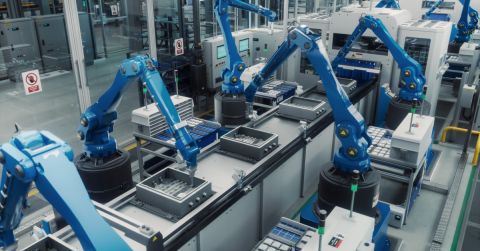PCB Part Swaps That Can Reduce BOM Cost
When you take a product into my volume production, the biggest cost driver switches from the PCB to the bill of materials (BOM). This is especially true when looking at products with many integrated circuits, large processors, and some specialty chips like sensors or FPGAs. When a big driver of product success is cost-competitiveness, it helps to know where costs can be reduced without impacting the performance or user experience of the product.
If the BOM cost is such a big driver, then there must be some part swaps that can help reduce the total BOM cost. In this article, we will look at some parts cost reduction opportunities that you may not have considered. Oftentimes, these can be implemented without major changes to the circuit functionality or reliability. And in some cases, they can help reduce assembly cost.
Big Processors
These parts get (and deserve) the most attention because processing power is a big enabler of many product functions. Large processors can also carry a lot of costs in the BOM, even with moderately expensive processors being second only to large mechanicals and connectors in terms of cost. Certain microcontrollers, MPUs, and FPGAs are all candidates for a parts swap that will reduce the costs of a new product.
The goal in these swaps is to not eliminate functions that are important to the end product. Some strategies for this type lower cost part swap include:
- Use a smaller part package in the same part number series
- Use a part with different temperature ratings
- Use a part in an alternative package
Large processors may be available in cheaper packaging, like this QFP.
Although these parts are the most important in most designs, they have the fewest number of possible replacements within a given vendor’s product lines. Processors are also not interchangeable across vendors, so it is easy to get trapped by lock-in if you do not identify suitable alternatives early.
Common ASICs
The idea of a “common” ASIC refers to a broad set of ASICs that provide similar functions across vendors. For example, there are many categories of ICs that provide standardized functions and are replaceable with components from other vendors:
- Logic gate ICs
- Analog/amplifier ICs
- Interface ICs (level shifters, multiplexers, switches, etc.)
- Sensors (temperature, pressure, etc.)
- Mixed-signal ICs (ADCs and DACs)
- Linear regulators
- Miscellaneous parts: oscillators, PWM generators, voltage references, etc.
Some of these parts could be pin-for-pin replacements across different vendors, so there will be plenty of opportunities to shop around for different parts. Even if parts are not pin-for-pin compatible, there may be opportunities to find functionally equivalent parts that do not demand major changes in the PCB layout, so you can still get a part cost reduction that quickly scales at high volume.
Passives
Most of the parts in a PCBA will be passive components, which can come in any number of sizes, tolerances, and packaging. Although passives are simple parts, swapping passives does bring some risk, which I have outlined in the table below.
Clearly, the risk level varies greatly depending on the type of part you might consider swapping. Sometimes, the most common swap is a tolerance swap, from high precision to low precision, and is typically done for capacitors and resistors. Some passives, most notably diodes, should not be swapped based on price alone as they might be performing some other very important task, like rectification in a switching power circuit.
|
Type of passive |
Risk level |
|
Common resistors |
|
|
Precision resistors |
|
|
SMD capacitors |
|
|
Large case capacitors |
|
|
Inductors |
|
|
Diodes |
|
Which Parts Shouldn’t Be Swapped
If your only goal is cost reduction, but you don’t want to lose reliability, then there are some parts that are probably best left untouched. The reason is that the potential reliability risks can outweigh the cost savings from a part swap, or these parts might require too much additional testing in order to qualify before scaling. There are two big areas where this applies: inductive components (specifically transformers) and connectors.
Some transformers are specifically chosen and integrated into a circuit based on how they interact with other components to provide low EMI, low thermal load, and highly reliable operation. This is definitely the case on high-power DC/DC converters; there often is no suitable part swap for a transformer that will not also require changing something else in the circuit and further qualifying those changes in the test.
With connectors, there are multiple specifications to consider, which includes form factor. In fact, a lower cost part might require a larger connector, and that might not be acceptable in your design. Form factor also applies in magnetics, both for inductors and transformers; there simply are not always drop-in substitutes that have the same form factor, specs, and lower cost.
Make Smarter BOM Decisions with Octopart
When you're actively looking to reduce BOM costs through strategic part swaps, the right tools can make all the difference. Octopart’s BOM Tool is built to help engineers, procurement professionals, and supply chain teams uncover cost-saving opportunities without compromising performance or reliability.

By uploading your BOM, you can instantly:
- Identify lower-cost alternatives based on real-time availability and specifications.
- Compare parts across multiple distributors to find the best prices and lead times.
- Spot supply chain risks, like lifecycle issues or obsolescence, before they impact your bottom line.
- Prioritize your preferred suppliers while still evaluating a broader landscape of options.









